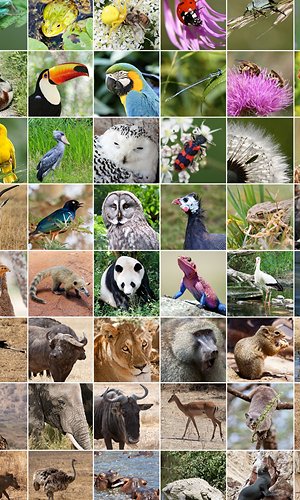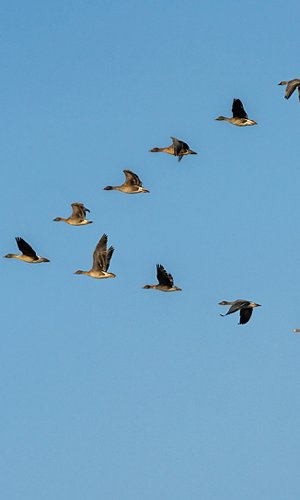From the tango to belly dancing, from flamenco to tarantella, from the ancient palaces of the Orient to discos, dance - besides being a true art - is synonymous with passion and the art of seduction. This is well known by cultures of all times and places, which, each in their own forms, have traditions related to dance.
However, dancing is not the prerogative of humankind, and there are numerous animal species that, due to various reasons, move their bodies in ways that look like a dance. For example, bees fly with extremely sophisticated and coded movements to inform their ‘colleagues’ of the position of the most succulent flowers; some flocks of birds synchronise their flight by moving as one body to disorient predators; lemurs, the famous mammals of Madagascar, hop gracefully by spreading their arms like dancers to keep their balance and move efficiently on the ground in a bipedal position (their short upper limbs do not allow them to walk on all fours); Hexabranchus sanguineus or nudibranch, a mollusc also known as ‘Spanish dancer’, floats in the water to get away from dangers or disturbing elements by moving its mantle, adopting movements so elegant that they resemble the skirt of a flamenco dancer. There are countless examples of ‘dancing’ in the animal kingdom.
One of the main reasons why animals also dance, however, is to win over a partner and, contrary to what we specimens of the species Homo sapiens are used to, it is often the male specimens who show off by moving their body. Many birds, for example, show their plumage and strength to females through their dancing, in order to show that they have a genetic heritage worthy of being passed on to their offspring and that they are therefore ideal mating partners.
Among the classes of animals that engage in behaviour strikingly similar to dancing to woo their mates, birds clearly stand out. Flamingos, from which the dance style 'flamenco' derives its name, are renowned for the collective performances that males stage to captivate the attention of females. In groups, these animals put on a veritable ‘parade’, stretching their necks and spreading their wings to arouse the desire of the females.
Another class of birds that are worthy of notice are bird of paradise (Paradisaeidae), rainforest dwellers and members of the order Passeriformes. These animals are endowed with very distinctive coloured plumage and perform veritable choreographies, often accompanied by an unmistakable singing. The courtship dances of birds of paradise vary from species to species, and it is from these behaviours that biologists have recently identified Lophorina niedda, previously considered a subspecies of Lophorina superba, as a species in its own right.
Let us move on from the world of birds to that of spiders and in particular to the Maratus speciosus, also known as the 'peacock spider'. During courtship, the males of this species raise their third pair of legs and colourful abdomen, showing them to the female in a veritable dance, probably to reduce her aggressiveness and prepare her for mating.
Aquatic animals dance, too. Humpback whales (Megaptera novaeangliae), marine mammals that can grow up to 17 metres in length, perform dances and acrobatics by turning on themselves in the water, beating the surface of the ocean, or striking each other with their fins. The males of this species sing a unique melody and repeat it for several hours, probably to draw the attention of females.
Just as there are mammals that dance in the water, there are also fish that perform jumps and dances on land, or rather in the mud. They are known as mudskippers (Oxudercinae), fish that spend about 90% of their time out of the water. These animals, which live in tropical and subtropical regions, are able to breathe through the skin and the mucous membrane of their mouth and throat, and dig underground burrows to aid thermoregulation and avoid predators. Since the eyes of these fish have also evolved to see better out of the water, courtship also takes place on land. In order to attract the attention of females, the males of this species perform jumps comparable to those of a ballet étoile.
Body movement driven by passion and the instinct of seduction crosses boundaries between species and continents. After all, to conclude with a quote from a great and revolutionary contemporary dancer, Marta Graham, “dance is a song of the body, whether of joy or sorrow”.





